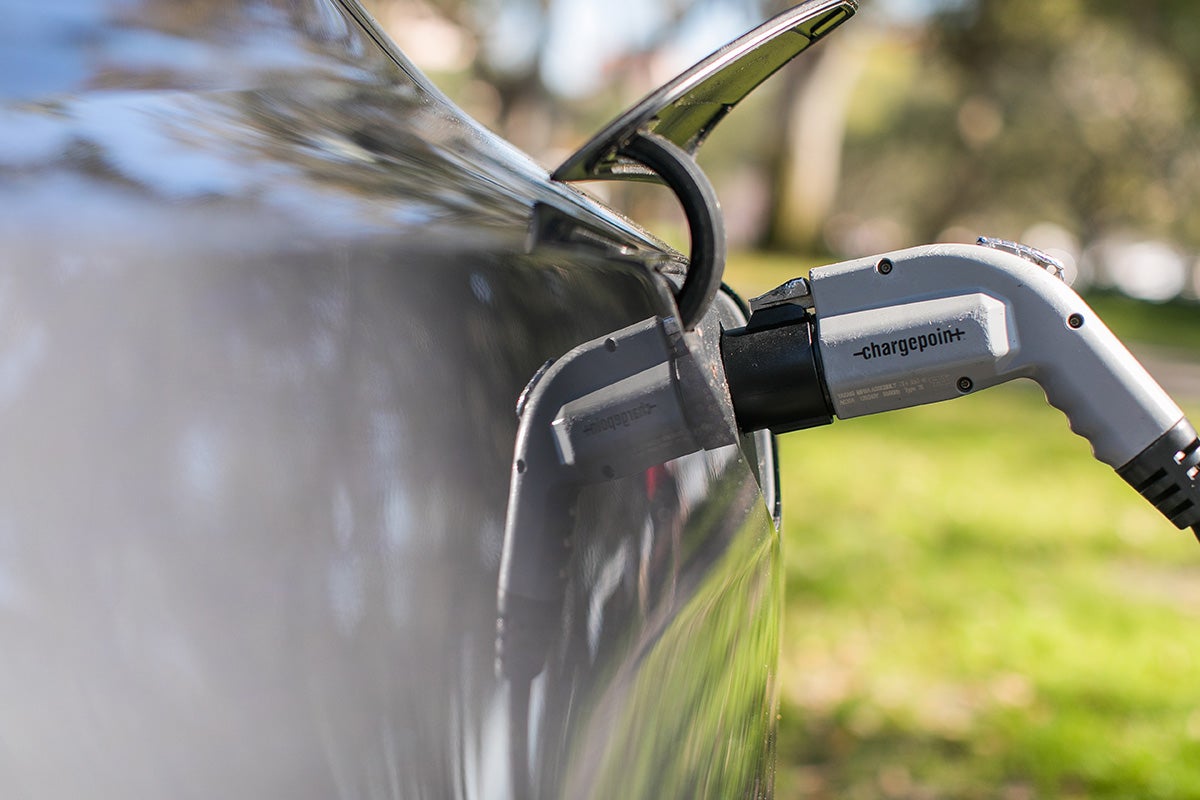After This Year, We All Deserve to Breathe a Little Easier
COVID-19 is an environmental justice problem. Electric vehicles can be part of the solution.
It’s clear that COVID-19’s burdens have fallen heaviest on communities of color. What’s less well known—but critical to understand—is what that has to do with electric vehicles.
By moving toward a clean energy transportation system, we can potentially save hundreds of thousands of lives. The pandemic has highlighted the need for this transition more urgently than ever. In coalition with environmental justice organizations, Earthjustice is working to bring about a zero-emissions future.
And despite a disappointing recent misstep from the Trump administration’s Environmental Protection Agency, we’re making real progress.
In the early months of 2020, cities and states began issuing shelter-in-place orders to control the spread of the highly contagious novel coronavirus. We watched nearly all transportation come to a screeching halt across the country. Major cities in the United States often dedicate one-third or more of their total area to roads, transit, and parking lots; those spaces, once filled with cars and bustling traffic, emptied almost overnight. The Ozone Monitoring Instrument on the NASA Aura satellite tracked a 30% drop in air pollution in the Northeast United States for the month of March.
But the reprieve was temporary. In late May, alongside lightening of restrictions across America, the CDC encouraged businesses to tell their employers to drive to work alone or to take single-occupancy forms of transit. Ozone levels rebounded across the states, reaching record highs in Los Angeles, Las Vegas, and Chicago.
Ozone, or smog, is one of the major types of air pollution in the United States. Also referred to as ground-level ozone and photochemical smog, it forms from the reaction between hydrocarbons and nitrogen oxides in the presence of sunlight. Both hydrocarbons and nitrogen oxides are, unfortunately, also common types of air pollution, so all the necessary ingredients for smog are frequently available, especially in the summer. The resulting ozone is an oxidant gas that is a known cause of inflammation and respiratory distress in the body – breathing ozone causes coughing, chest tightness, decreased lung function, and aggravation of asthma. Long-term exposure is associated with cognitive decline, depression, and increased risk of developing lung cancer. In the U.S., 100,000 yearly deaths are attributed to illnesses linked to air pollution.
Black Americans are more likely to live near highways and other heavily polluted areas; they’re 75% more likely to live near facilities that produce hazardous waste. In a recent interview on NPR Weekend Edition, Robert Bullard, father of environmental justice, referred to this phenomenon as having the “wrong complexion for protection.” And now, studies show that those exposed to heightened levels of air pollution are more likely to die from COVID-19 than those who lived in less polluted areas.
Despite this evidence, on July 16 the Environmental Protection Agency announced a disappointing proposal to maintain the current National Ambient Air Quality Standards for ozone at 70 parts per billion, rather than introduce a more health protective value as recommended by the American Lung Association and the American Academy of Pediatrics, which would protect sensitive and vulnerable populations.
Earthjustice attorneys like Paul Cort have been fighting weak air pollution regulation for decades but are now even more motivated to continue their work. Cort, his colleagues, and city planners had already been watching (pre-pandemic) vehicular pollution levels frequently surpass federal standards, and public transit options struggle to compete with personal vehicles and Transportation Network Companies (TNCSs) like ride-shares and electric scooters. The pandemic has highlighted the lack of resiliency, safety, and sustainability built into our transportation infrastructure.
Earthjustice has partnered with a coalition of environmental justice organizations from across California to confront the increasingly toxic air quality, especially along freight lines and freeways, which are sometimes called “diesel death zones.” The Earthjustice Right to Zero campaign has helped to phase out coastal gas plants, and it moved the Los Angeles Metro to invest in a full fleet of zero-emission electric buses. California went on to pass a rule that requires all state transit agencies to purchase exclusively zero-emission buses starting in 2029. The campaign pushes to electrify our transportation and buildings, and works to ensure that the electricity for these sectors comes from a zero-emission grid.
This June, after months of hard work and public education, the California Air Resources Board (CARB) unanimously voted to pass the first electric struck standard in the United States, requiring zero-emission truck sales targets for manufacturers starting 2024. California is frequently regarded as the “gold standard” for their progressive policy measures and in this case, the impact of CARB’s vote was immediate. Fifteen states and the District of Columbia have announced that they will follow California’s lead and transition to electric trucks and buses. Clean trucks are now more important than ever because emissions from freight are climbing due to increased reliance on online shopping while we continue to try to navigate this pandemic safely.
Earthjustice’s actions aim to make all transportation zero-emission. A transportation system running on clean energy with zero emissions would dramatically decrease air pollution levels in the country, and in turn, decrease the number of persons affected by the negative health effects of air pollution. This pandemic has highlighted that there is still more work to be done to increase the resiliency of our transportation systems, but it also demonstrates what Earthjustice and its attorneys understand well: the health of our ecosystems and our communities are interconnected.
Earthjustice’s Washington, D.C., office works at the federal level to prevent air and water pollution, combat climate change, and protect natural areas. We also work with communities in the Mid-Atlantic region and elsewhere to address severe local environmental health problems, including exposures to dangerous air contaminants in toxic hot spots, sewage backups and overflows, chemical disasters, and contamination of drinking water. The D.C. office has been in operation since 1978.
